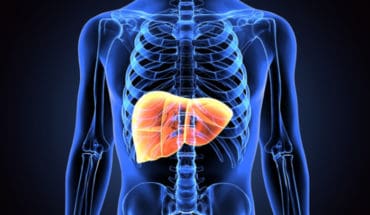AI-designed catheters could dramatically reduce urinary tract infection rates among hospital patients, without the need for chemicals or antibiotics.
Around one in five people who stay in NHS hospitals need to use urinary catheters, which are flexible hollow tubes usually made of plastic that drain urine from the bladder into a bag. Urinary catheters are used for many important reasons – to monitor how much urine you pass; or to make sure that your bladder doesn’t get overly full when you have a surgical operation for example. And around An estimated 90 000 people living in the community have catheters inserted long-term.
Many patients do develop urinary tract infections when they have a catheter inserted and the longer a catheter is in place, the more likely you are to get a UTI. Urine infection is one of the most common hospital infections and catheters are the most common reason to get one. Bugs can easily enter the bladder when the catheter is inserted, creating a bio slime which movies up the inside of the tube into the warm wet environment of the bladder where they rapidly multiply.
Up until now, catheters have been coated with antibiotics or metals like silver which kill microbes. However, neither are failsafe and a growing number of bacteria are developing resistance to antibiotics, making them less effective.
This new AI-designed catheter uses its shape alone to deter harmful bacteria, according to a study published in the latest issue of Applied Science.
Researchers at California Institute of Technology (Caltech) in the US used AI to create digitally modelled catheters which were then run through tens of thousands of simulations in minutes rather than days. Once they established the design that best blocked the bacteria, the researchers used a 3D printer to build a plastic prototype and tested it in the lab with a warm liquid containing E-Coli – the most common type of bacteria which leads to UTIs caused by catheters Compared to a traditional catheter, the AI version built up less than one hundredth of the amount of bacterial biofilm after 24 hours.
Animashree Anandkumar, Bren Professor of Computing and Mathematical Sciences at Caltech and co-author of the paper, explained: ‘We looked at designing a geometric control of microbial distribution, a passive mechanism that is simple and cheap to construct. This involves adding asymmetric shapes, such as triangles inside the tube, that prevent bacteria from swimming upstream due to vortices and turbulence created in the fluid from irregular boundary shapes. We used Neural Operators to optimize the geometric design.’ Neural operators are a type of sophisticated AI that optimises design by creating and learning from simulations. The AI version contains a series of tiny ‘shark fin’ spikes that point backwards, forming a miniaturised obstacle course. Bacteria such as E-Coli, which cause 90 per cent of UTIs, swim using a “two-step forward along the wall, one-step back in the middle” motion that helps them move forwards against the urine stream. Researchers in the Brady lab had previously modeled this phenomenon.’ However the spikes prevent them moving along the wall, where fluid movement is slower. Instead, they are pushed out into the middle of the fast flowing stream, where they were pushed back out of the catheter.
Urinary catheters are associated with the majority of urinary HCAIs and are an important risk factor for the incidence and severity of GNBSI. Urinary tract infection (UTI) is a leading cause of healthcare-associated infection (HCAI) Dr Giles Halliwell said: ‘’Urinary catheters are used in many common operations to allow the bladder to drain and are life savers, but they do cause UTIs in about a eighth of patients in the US and UK – about a quarter in developing countries. This is because bacteria from the outside of the body can enter the catheter and move towards the sterile region inside the bladder, where they multiply very quickly and cause infection.’
This AI solution takes advantage of theway that E-Coli bacteria (one of the most common bacteria associated with CAUTIs). It shows how AI modelling can be very useful in a variety of clinical settings because it makes it quick and easy to test many thousands of scenarios in virtual reality before you even get to a prototype.
Currently, we try and avoid infection by using catheters which have interior walls which are coated in antibiotics or metallic agents such as silver which kill bacteria. However, they are not failsafe. This is an exciting breakthrough. However, it may not work with all bacteria known to colonise catheters, which have a different way of moving. For example, Enterococcus and Proteus bacteria also cause UTIs but don’t ‘run and tumble’ like E-coli.
Modified designs would have to be developed to tackle the different kinds of bacteria that cause problems.’ AI has already been used widely in the field of healthcare, including in the NHS. ’This is an exciting breakthrough which shows that AI has huge potential when it comes to improving health outcomes for patients.’ says Lord Tim Clement-Jones, former Chair of the House of Lords Artificial Intelligence Select Committee and Co-Chair of the All Party Parliamentary Group on Artificial Intelligence.”It is evident that AI is a highly versatile technology which will have many uses in healthcare. In the recent past, we have heard of other major breakthroughs in the field of AI —tripling stroke recovery rates with Brainomix4, which uses state-of-the-art AI algorithms to help doctors make quick, accurate decisions for patients, mental health support through the conversational AI application Wysa5 and Eye2Gene, a decision-support system with genetic diagnosis of inherited retinal disease for example. We have seen the introduction of Frontier software in the NHS designed to ease bed blocking by improving the patient discharge process. It is also clear that consumer AI-enabled health apps and devices can have a strong future too in terms of health monitoring and self-care’
- Biden Declines Second Term: Health Concerns - 23rd July 2024
- New catheter coating stops bacteria cells from swarming - 10th June 2024
- AI-designed catheters could dramatically reduce urinary tract infections - 10th June 2024







